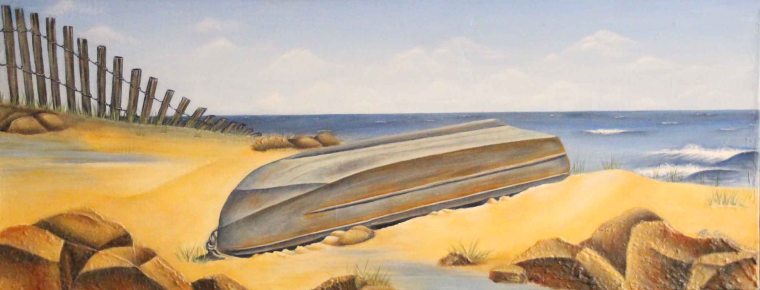Part 1 – Painting on Canvas.
I’m sure you’ve heard it a billion times by now…acrylics are so versatile!
Apart from their ease of usage, acrylic’s versatility extends to a wide range of surfaces you can paint them on. These include; canvas, MDF, Masonite, wood, metal, stone, fabric, glass or paper. And I can vouch that each one of these is a suitable surface.
Yep…I’ve painted on all of them; with amazing results.
The most common painting surface from this vast range is canvas, so for my first post on Suitable Surfaces for Acrylic Painting I will devote entirely to Painting on Canvas.

For centuries canvas has been the traditional surface for art painting. It was the preferred choice of surface by many famous artists in history. This durable surface has passed the test of time.
From traditional art styles to modern abstract painting, artists love painting on canvas.
Canvases for acrylic painting come in a range of various forms, shapes and sizes and are usually made from either linen or cotton. They range from high quality pre- stretched linen canvas to cheap canvas pads and are available accordingly from exclusive art supply stores to cheaper variety stores. The most popular canvas form is made from cotton fibre, pre-stretched over a wooden frame. These are usually pre-primed for acrylics or oils, some are primed for both, so, always check that you are purchasing a type which is suitable for acrylic paints; otherwise acrylic paint won’t adhere to a surface that’s pre-primed specifically for oil paints.
A primed canvas prevents the paint from soaking through the fibres. Over time an un-primed surface can make the painting look washed out.
Although pre-primed canvases are conveniently ready to paint on, personally I still prefer to give them a couple of coats of gesso using my own product before I begin… just to be sure I’m starting with the best surface preparation possible. I never know what type or quality primer has previously been used.
Canvases also come in different textures, the smoother the texture the more suitable it is for fine detailed work as opposed to the rougher type which is best for artists using bold brush strokes.
Until next time,
Happy painting,
Effie



Wood canvas is my choice.
LikeLiked by 1 person
Wood canvas is a great choice, I have always preferred wood surfaces to canvas. Thank you for taking the time to read. Have a nice day.- Effie
LikeLike
Thank you for following my blog Effie. Kevin
LikeLiked by 1 person
Pingback: Experiment with creative materials | Effie Carayannis